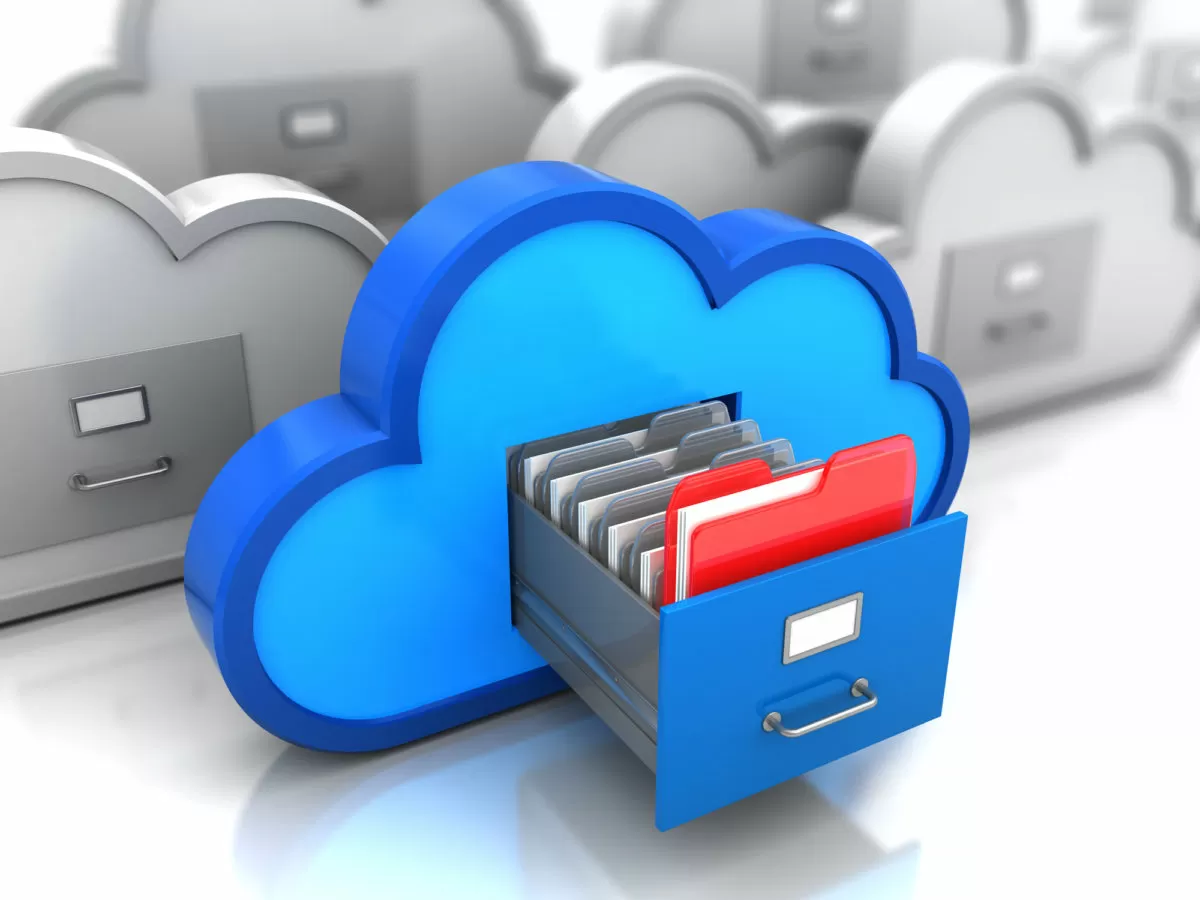Pros and cons of a private cloud compared to a public one
VPC (virtual private clouds or virtual private clouds ) was created as a response from public cloud service providers in competition with private clouds such as OpenStack. Some companies didn't like the idea of putting their data in the public cloud, sharing the combined resources with other companies - perhaps even with competitors.
Many CIOs stated at the time that their data would never exist outside of their firewall. When moving to the cloud, it should have been their cloud in their data center: a private cloud.
The problem with private clouds is that they still require buying hardware and software, renting or purchasing data center space, and hiring people to take care of it all. As a rule, using private cloud services had a negative value and did not provide any real security advantages.
VPCs are defined slightly differently depending on which cloud service provider or MSP (managed service provider) you choose, but they have a few common patterns:
- Your data processing and storage systems do not mix with other tenants. This is achieved through physical and virtual mechanisms managed by the cloud computing provider.
- You will get a unique private IP subnet that you will use as if the hardware and software were installed in your office.
- You will use secure virtual communications, such as VLANs or VPNs. In some cases, these connections use the open Internet; in other cases, they may have a dedicated channel directly to the cloud provider.
- First, it is the cost. Of course, this depends on your public cloud provider or MSP, but in all cases VPC costs more than standard cloud hosting. In some cases, this is even more expensive than running a private cloud on-premises.
- You should consider the input and output costs of data moving in and out of the VPC, as well as the cost of a private connection per hour.
- When connecting to a virtual private cloud over the Internet, there are always problems with increasing latency. Of course, this depends on the physical location of the cloud provider's data center, the frequency of data exchange, and the type of VPN encryption.
Pros and cons of cloud storage
It looks like everything is moving towards the cloud these days, so what about data storage? Isn't it time to turn off these expensive storage devices in the data center and move all this data to the cloud? The answer is much more complicated than you think.

Security and privacy issues inevitably arise when businesses consider whether to trust a public cloud service provider with information that could harm the company in the event of a data leak. Performance is another issue, especially when it comes to applications that require low latency. Managing data when it is locked in your data center is by definition easier than managing data that is spread across multiple geographic availability zones of a single cloud storage provider, or even spread across multiple providers.
David Friend, CEO and co-founder of cloud storage provider Wasabi Technologies, estimates that about 80% of enterprise storage is still on-premises, but he predicts that within 10 years, most of the data will be in the public cloud. "The warehouse farm management business itself makes less and less sense," says a friend. Agree with this, IDC analyst Andrew Smith. "More and more capacity is expected to be stored in the public cloud," he says.
|
According to Allied Market Research, the cloud storage market was $46 billion in 2019 and is expected to grow by more than 20% per year, exceeding $222 billion by 2027. In wood Research comes to a similar conclusion, predicting a growth rate of 19.75% between 2020 and 2028. |
When it comes to primary storage associated with specific workloads, storage follows the application, regardless of whether the application is moving from an enterprise data center to a private cloud or public cloud environment, says Henry Baltazar, a storage analyst at 451 Research. ""At the end of the day, storage is a secondary element of the app," says Balthazar.
Currently, the most popular option for businesses is to store backups in the public cloud.
Advantages of cloud storage
- Lower costs: purchasing cloud storage on a "just pay for what you use" model is cheaper than spending millions of dollars on your own storage hardware that needs to be maintained and updated. In fact, according to Smith, as competition between the main cloud storage providers – Amazon, Microsoft, Google, IBM – heated up, prices continued to fall. "There's a pretty obvious race to the bottom on price in terms of public cloud storage."
- Scalability: being able to access more data storage during periods of unexpected or unplanned business needs can be a lifesaver for a company. Similarly, companies can quickly and easily wind down their operations. And almost unlimited data storage capabilities in the public cloud come into play when companies start thinking about creating data lakes so they can apply artificial intelligence to Internet of things data or other large data sets.
- Availability: cloud storage allows end users to access and share data on any device, regardless of where they work. This type of connection can improve collaboration efficiency, productivity, and business flexibility.
- Maintenance: no matter how well you maintain your storage resources, disks crash, components fail, appliances fail. In an on-prem scenario, this is an emergency that the it Department must handle. In the cloud scenario, this is Amazon's problem.
- Constant updates: organizations with storage hardware must keep track of how their devices age and become obsolete. Cloud storage companies are constantly providing updates as part of the normal course of business.
- Advantages of backup: data backup has always been important for business continuity, but it has become more relevant in the era of ransomware attacks that encrypt data and require money to unlock it. Most large enterprises back up their data in a secondary data Center, but cloud storage provides a low-cost alternative that eliminates the need for companies to maintain redundant objects.
- Disaster recovery: DR involves maintaining a mirror image of the production environment in a different location so that it can be activated in the event of a crash. Instead of owning and managing a secondary DR site that may never be needed, hosting DR in the cloud is a tempting prospect. The most difficult part is deciding whether to do it yourself, use the "recovery as a service" offer from cloud service providers such as Azure and IBM, or work with third-party DRaaS providers such as iLand or Recovery Point.
Problems with cloud storage
Pricing: Yes, cloud storage is cheap, but it's not easy to determine exactly what your costs will be in order to make accurate budgeting and forecasting. Storage is divided into three large groups: hot storage or active data that needs to be accessed frequently, cold storage or data that needs to be accessed infrequently, and cold storage, which is an inactive data archive that is stored for compliance or regulatory reasons.
The challenge comes when organizations have to choose between six levels of Amazon storage (standard, smart, standard infrequent access, single-zone infrequent access, Glacier, and Glacier Deep Archive). Similarly, Microsoft Azure has four tiers and Google has five, with prices dropping as it moves to colder forms of storage.

- Now there are third-party providers who can help companies classify their data, make sure it falls into the appropriate tier, and even "trim" the data over time in an attempt to control costs.Security and privacy concerns: cloud service providers have made strong efforts to calm these concerns, but according to IDC surveys, security is still the # 1 issue among enterprise customers. Smith notes that service providers now offer a wide range of security-related features, including data encryption, SLA," multiple nines " availability, the ability to track sensitive data, and so on.
- Management complexity: when companies start moving data to the cloud or multiple clouds, they face the challenge of managing in a hybrid cloud environment, which can be challenging. First, it employees may not have the right skills to do things like verify compliance with service level agreements or track the reasons for rising usage costs. Smith says many businesses end up buying third-party cloud storage management tools from vendors like Veeam, Commvault, and Zerto.
|
The good news is that existing storage hardware vendors (NetApp, Dell / EMC, IBM, HPE, and others) offer software add-ons that integrate an enterprise's online storage with its cloud volumes to create a single management platform in a multi-cloud environment. "This model resonates with customers," says Smith. He adds that most businesses have wisely decided not to distribute their storage across multiple service providers unless there is a specific purpose for such use. For example, companies can use AWS for their CRM applications and Azure for email. But they are unlikely to have CRM data in more than one cloud. |
- Single-vendor binding: in practice, it can take literally months for an enterprise to move large amounts of data to the cloud over a normal Internet connection. "It still hurts to move a lot of data," says a friend. So, imagine this process in reverse if an organization wants to delete its data from the cloud space. Moreover, in many cases, companies sign a contract for three years in advance, and there are even monetary penalties for early deletion of data.
- Performance: there is no way around this – accessing data hosted in an on-prem data center or even in a peripheral data center will always be faster than accessing data from the cloud. This raises the question of which applications exactly require low latency, and which can live with low latency. Global companies should also conduct their research to make sure that the cloud provider has availability zones in all geographical areas where the company does business.
Conclusions
Data storage requirements continue to grow, and most companies want to get rid of this expensive cycle of updating storage hardware. But it's important to keep in mind the complexities of moving storage to the public cloud.
Ron Amadeo
10/06.2020











